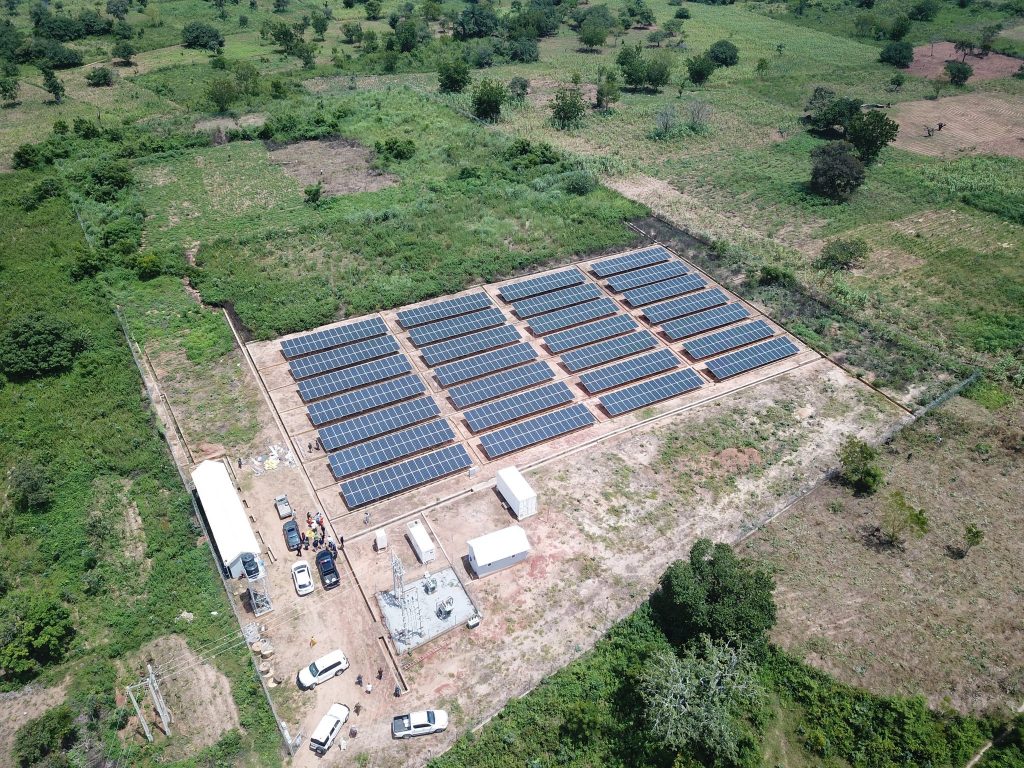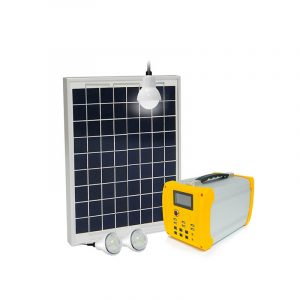Bridging the Gap in Energy Management
MicroPower Manager (MPM) is an open-source software solution for mini-grid customer and asset management, originally developed by INENSUS and first launched in 2020. This software provides a robust set of features, including dashboards for mini-grid clusters and villages, customer relation management (CRM) tools, a comprehensive ticketing system and maintenance, geo-referenced customer information, and seamless integration with mobile money services. Additionally, it boasts an appliance and machine sales engine that supports deferred payment schemes, as well as quality data export and reporting capabilities.
EnAccess believes in the power of commonly shared and maintained infrastructure for routine operations (like customer and energy asset management in decentralized energy systems). Therefore, we decided to pick up this development and help bring it to the next level and beyond to allow a broader set of companies to use and benefit from it. EnAccess has engaged with INENSUS to improve and broaden its usability, improve documentation to allow more community contributions, and promote and disseminate the MPM. Now that the grounds are built for the widespread use of the tool, we will be implementing further features and actively support adopting companies.
As mini-grid operators continue to expand the software’s reach by integrating with Mobile Money providers and meter manufacturers, a notable gap surfaced between Solar Home System (SHS) companies and Mini-grid-SHS hybrid companies expressing interest in utilizing this open-source tool for SHS customer management. Recognizing the opportunity to enhance the software’s capabilities, we integrated additional features tailored for SHS. The convergence of mini-grid and SHS management is within reach. In the next phase, we will customize the MPM to meet the needs of a few selected SHS companies in Mozambique. The MPM is on its way to covering a broader set of use cases.
The Need for a MicroPower Power Manager
The past decade has witnessed a gradual evolution within the mini-grid sector, transitioning towards a mature, off-grid utility model that has been pivotal in enhancing energy access in emerging markets. But besides Energy-as-a-Service (EaaS) in the Decentralized Renewable Energy (DRE) space, local entrepreneurs are also increasingly stepping up and securing investments to provide affordable small-scale off-grid solutions through pay-as-you-go(PAYG) models. This aims to broaden the consumer base, particularly reaching those at the bottom of the economic pyramid. However, these local companies face the challenge of managing a myriad of technical and financial data points from their daily operations.
Presently, these local DRE companies are confronted with limited options:
· Developing In-House Solutions: Creating a bespoke software solution in-house is a complex and costly endeavor.
· Commercial Software: Utilizing commercially available software, while viable, can incur significant operational costs and still requires substantial in-house IT capacity for integration, often delaying profitability.
· Manual Processes or Partial Digitalization: Opting for manual handling of data points or partial digitalization through monitoring energy assets via platforms provided by inverter or SHS manufacturers, both of which impede business growth and scalability.
While the first two options are feasible for large (international) companies with ample resources for digitalization, the majority of domestic small- to medium-scale off-grid companies in the African context find themselves constrained in their journey toward sustainability and profitability.

MPM: A Solution to Empower
The primary objective is to eradicate energy poverty on a global scale by making available tools that allow sustainable operations of mini-grids and solar home system projects. Digitalization is undeniably a key component of this strategy, offering a pathway to profitability. Therefore, the critical task at hand is not merely achieving full digitalization but doing so cost-effectively and efficiently.
This necessitates:
– Enabling a broader spectrum of operators to have access to the benefits of digitalization.
– Reduce duplicate efforts and generate a collaborative ecosystem instead of the baseline infrastructure.
– Consolidating as many operational processes into a single platform (where meaningful) or ensuring interoperability across different tools and platforms for enhanced efficiency.
In the rural context, comprehensive digitalization entails tracking productive appliances, managing customer relationships, tracking payments and debts, facilitating customer communications, and extending beyond the mere flow of electricity and financial transactions. INENSUS took a significant step forward in 2020 with the launch of the Open Source software to empower mini-grid companies to digitalize their operations comprehensively within a unified platform.
Giving the MPM ongoing support and creating a user and contributor community is a natural next step to allow the tool to have the impact it can have. In addition, the tailoring of the MPM software to serve the needs of SHS companies fills a critical market gap. Through extensive engagement with SHS companies, it became evident that there was a demand for an easily accessible, low-barrier, and affordable remote monitoring software capable of facilitating full digitalization of DRE companies’ processes. The integration of mini-grid and SHS management now emerges as a viable option, promising significant cost reductions for also operating Mini-Grid-SHS hybrid models.
Features of MPM as originally designed
Key features of MPM include:
– Integrated prepayment metering with secure mobile money connection, compatible with STS prepaid meters and smart metering technology on request
– Monitoring electricity supply asset performance (PV output, battery banks’ state of charge, site load)
– Built-in ticketing system to effectively manage customer support cases, saving time and operating cost.
– Centralized CRM database that stores all information of a customer, making it accessible at a glance.
– Keep control of your data. Always know where your data is, who has access to it and how it is used.
– API access points, highly adaptable to fit exactly to your utility’s needs.
– Analytics to compare benchmark of ongoing operations to revenue targets.
– Automatic generation and download excel-based reports on customer consumption data (in currency and kWh units)
– MPM website interface is currently available in English, French, and Burmese language.
Seamless Integration for Solar Home Systems (SHS)
The integration of features tailored for SHS within the MPM software include:
– A separate window and engine for SHS sales on deferred payment schemes/PAYG are in parallel with appliance sales.
– Flexibility for database extractions and data export with options specific to SHS operations.
– Financial transaction notifications
– Different user roles
Further features being added soon:
– Integrations with additional OEMs of SHS
– Upgraded user interface to allow SHS operations customized dashboards
– Improved notification schemes for outstanding client payments
– Add integration with additional sector analytics platforms
– Integrations with additional mobile money providers (specifically in Mozambique but also elsewhere)
– The addition of further user roles allows broader flexibility for SHS business
– Additional features will be developed based on user feedback.

Unlocking Value with Digitalization using the MPM
In countries like Nigeria, Kenya, and Mozambique, numerous companies are directly engaging with communities, providing SHS systems on deferred payment terms. By empowering early-stage SMEs to achieve operational efficiency, profitability, and the capacity to attract finance the MPM stands as a cornerstone for allowing those domestic DRE companies to grow and expand operations. Increased efficiency and scalability are imperative for electrifying millions of rural residents across Africa and beyond.
Furthermore, funders, investors, financiers, policymakers, and regulators rely on data to craft their market offerings and shape regulations and policies. This data can only be harnessed through digitalization. The Open Source emerges as the most accessible and cost-effective solution for the sector’s digital transformation. Integration with sector analytics platforms like Odyssey Energy is already seamless with MPM, and additional ones will be added.
Through the MPM, the energy access sector is not just advancing in digitalization but also fostering sector-wide collaboration and facilitating access to crucial tools and know-how to create a more vital and democratized ecosystem where more domestic SMEs can participate in a challenge to provide universal and clean energy access.